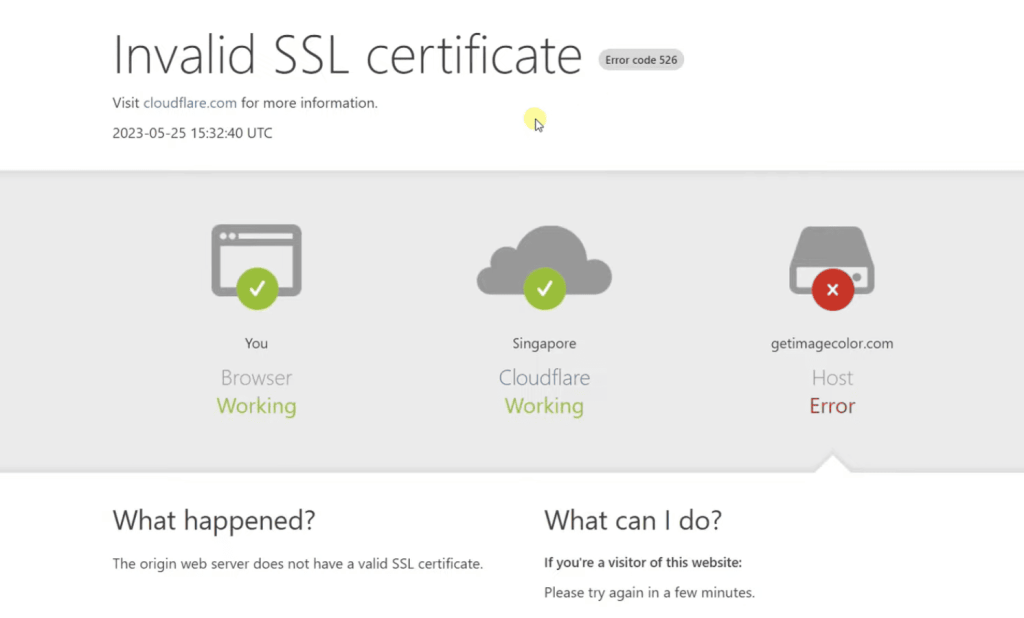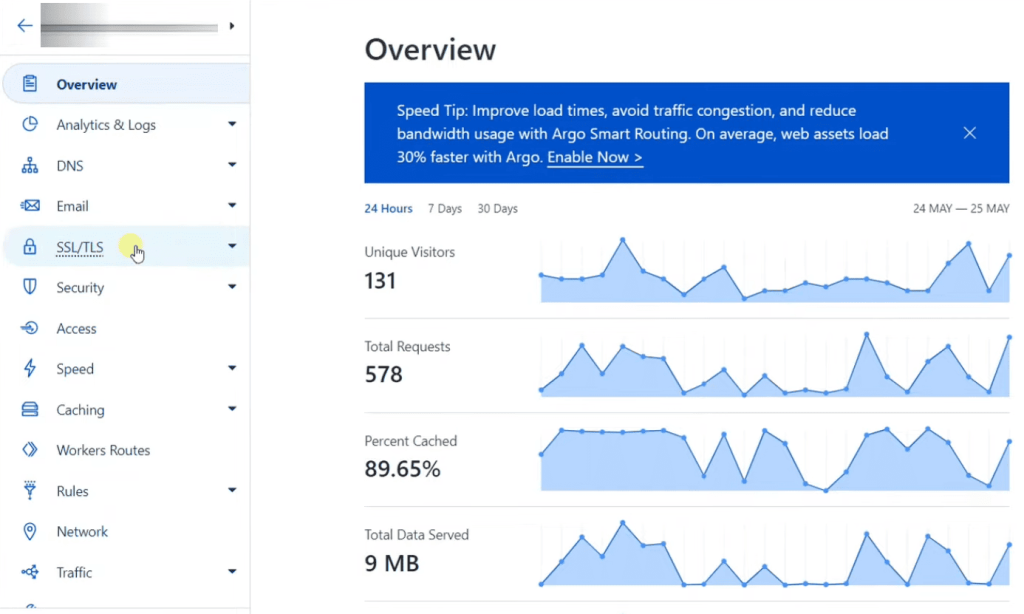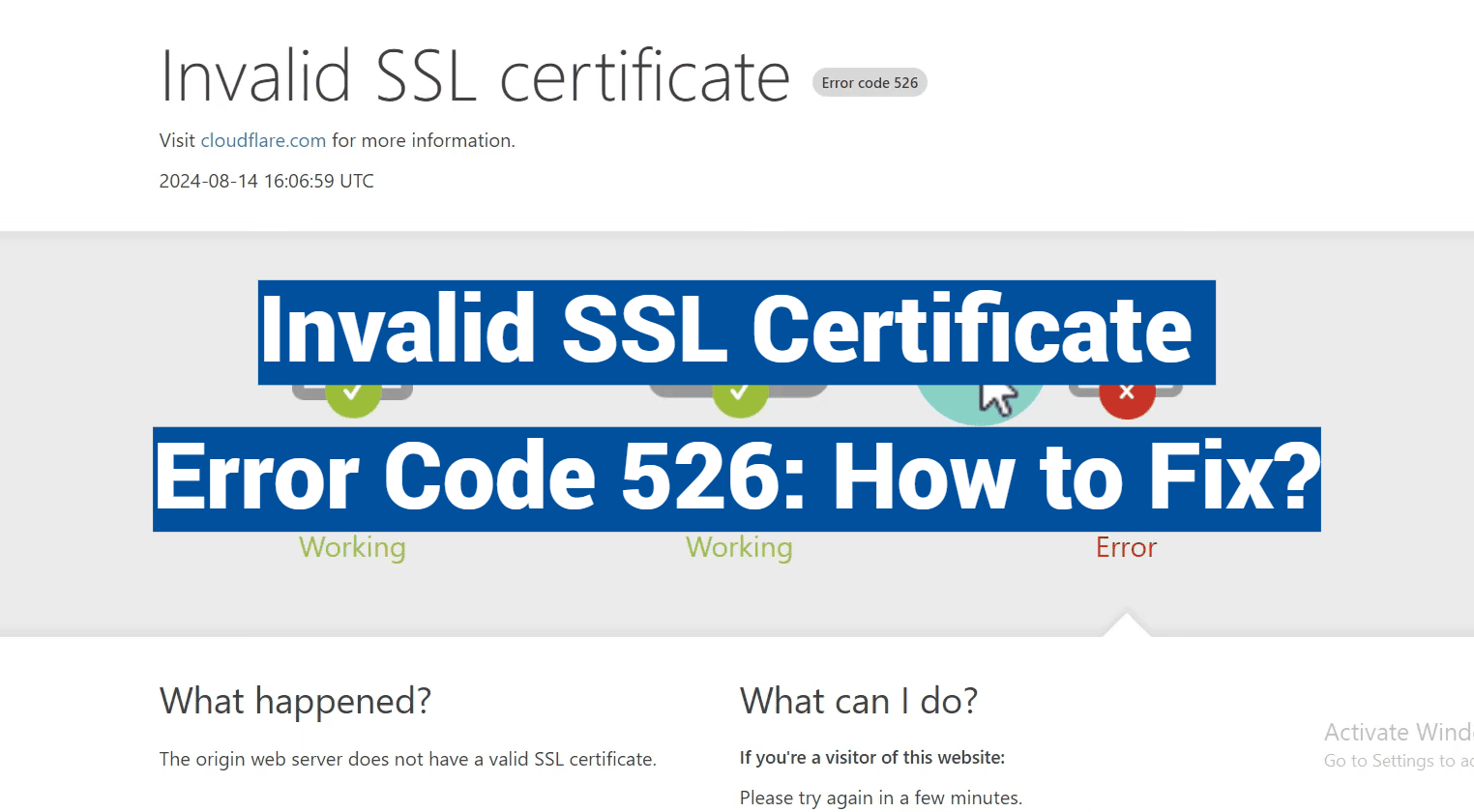Did you know over 20% of all websites rely on Cloudflare’s security infrastructure? Yet even with this protection, a single misconfigured security protocol can shut down access completely. Imagine visitors seeing bright red warnings instead of your content – that’s the reality when encrypted connections fail.
This guide tackles a specific roadblock that leaves both users and site owners stranded. Unlike standard browser alerts, Cloudflare’s 526 notification means their systems detected untrusted security credentials on your origin server. Visitors get blocked before reaching your content, creating a digital “Closed for Business” sign.
Why does this matter beyond lost traffic? Search engines downgrade sites with security issues, and 73% of users abandon pages showing connection warnings. The clock starts ticking the moment that error appears – every minute costs credibility and conversions.
Key Takeaways
- Cloudflare-specific issue requiring server-side certificate checks
- Triggers full access blocks instead of warning pages
- Common causes include expired or self-signed credentials
- Directly impacts search rankings and user trust metrics
- Requires different troubleshooting than browser-based SSL errors
We’ll walk through practical fixes that go beyond basic renewal checks. You’ll learn how to verify certificate chains, configure strict encryption protocols, and prevent future disruptions. Let’s turn those error screens back into working gateways.
Understanding SSL Certificates and Error Code 526
Modern websites need trusted identification systems just like physical businesses. Think of security credentials as digital passports that verify a site’s authenticity. When these credentials work properly, they create safe pathways for information exchange.

What Makes Security Credentials Trustworthy?
Web security relies on three key elements:
| Component | Purpose | Example |
|---|---|---|
| Domain Validation | Confirms website ownership | Example.com registration |
| Encryption Keys | Scrambles sensitive information | 2048-bit RSA key |
| Authority Signature | Verifies credential legitimacy | Trusted CA stamp |
Trusted third parties called Certificate Authorities act as digital notaries. They confirm a site’s identity before issuing security credentials. This process prevents imposters from creating fake versions of legitimate websites.
When Security Checks Fail
Cloudflare’s system performs rigorous checks before allowing access. If their servers detect mismatched or expired credentials during the initial handshake, they block the connection entirely. This differs from browser warnings that let users proceed at their own risk.
Four common verification failures include:
- Expired security credentials
- Credentials issued for wrong domains
- Missing intermediate certificates
- Unrecognized certificate providers
These issues break the chain of trust that modern web security requires. Regular audits and timely renewals help maintain seamless connections between servers and visitors.
Common Causes of Error 526
Security hiccups can shut down access faster than a broken lock. When encrypted connections fail, specific technical oversights often hide beneath the surface. Let’s break down the typical offenders that trigger this full connection block.
Expired and Mismatched Credentials
Digital security passes have expiration dates like milk cartons. Over 38% of website owners forget to renew credentials before they lapse. This creates immediate distrust between servers.
Domain mismatches act like wrong name tags at security checkpoints. If your credentials list “www.yoursite.com” but visitors arrive at “yoursite.com”, gatekeepers see red flags. Always verify exact domain names during setup.
DIY Certificates and Setup Mistakes
Self-issued security passes work for internal tests but fail public scrutiny. Cloudflare rejects these homemade credentials because no trusted authority verified them. Think of it like using a library card to board an international flight.
Installation errors compound the problem. Missing intermediate files or mismatched encryption keys break the verification chain. One hosting company found 62% of connection issues stemmed from incomplete certificate bundles.
Outdated Security Protocols
Older encryption methods became hacker playgrounds. Protocols like SSLv2 lack modern safeguards, triggering automatic blocks. Cloudflare’s strict mode acts like a bouncer rejecting expired IDs – no exceptions.
Regular audits prevent most issues. Set calendar reminders for renewals and use trusted certificate providers. Your visitors deserve seamless, worry-free access to your content.
Troubleshooting invalid ssl certificate error code 526
What separates a secure site from a digital “Keep Out” sign? Proper configuration of your security credentials. Let’s walk through practical steps to resolve blocked connections and keep your site accessible.

Validate Your Security Setup
Start by checking expiration dates and authority stamps using free online analyzers. These tools reveal missing links in your certificate chain or mismatched domain names. Automated monitoring services can alert you before credentials expire.
Refresh Outdated Credentials
If your security pass has lapsed, generate a new signing request through your hosting provider. Modern platforms often handle renewals automatically. Always verify proper installation – a valid certificate means nothing if your server can’t find it.
Upgrade Encryption Standards
Older security protocols create vulnerabilities. Enable TLS 1.3 and disable legacy options in your server settings. This simple switch strengthens protection while maintaining compatibility with modern browsers.
Regular maintenance prevents most connection issues. Schedule quarterly security checkups and keep documentation handy. Your visitors will enjoy seamless access, and search engines will reward your vigilance.

